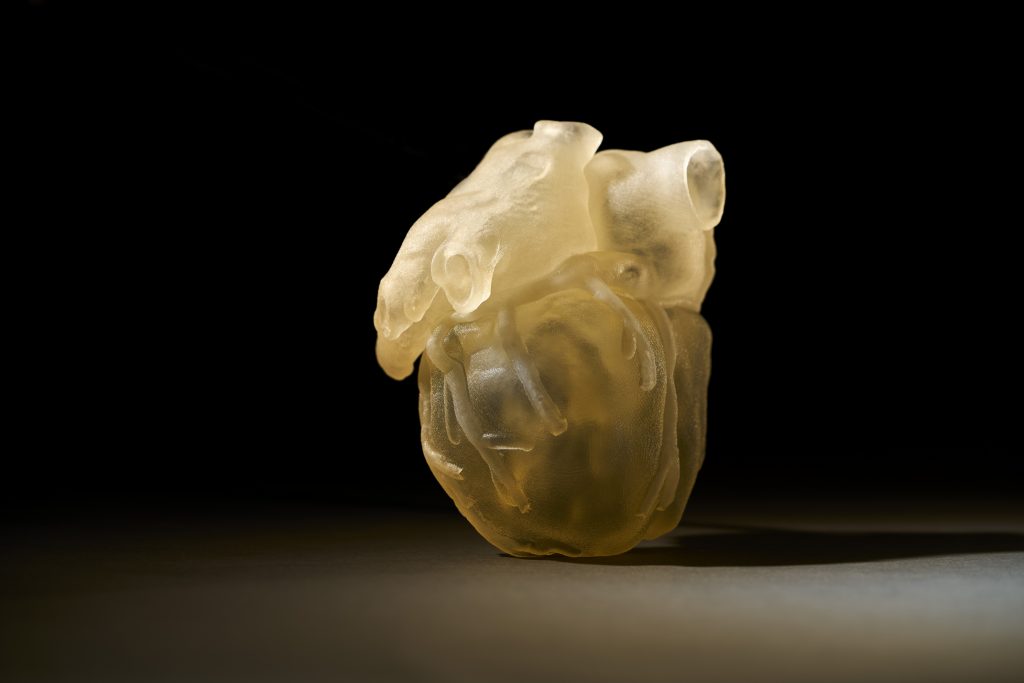Leading 3D printer OEM Stratasys has released a medical upgrade to its award winning J750 system. The J750™ Digital Anatomy™ 3D printer, released to the public today, is made to for use by healthcare professionals. It is compatible with a new range of materials from Stratasys which are specifically designed to make anatomical models. Applied in pre-surgical planning, or for training, models made from these materials mimic the feel of live-tissue, providing surgeons with “a more realistic […] environment” and “no-risk setting” for practicing complex operations.

The J750 in medical
Stratsys’ original J750 3D printer was initially launched in 2016. Then pitched for product development, over the past three years the capabilities of system have found a showcase in the production of anatomical models. This is due in part to the quality and range of colors made possible by PolyJet technology. Models created with the method can be clearly segmented and color coded to communicate complex structures. The J750 is also capable of multimaterial 3D printing, so various textures can be incorporated into an object for varied functionality.
One recent advance fundamental to the J750’s medical use has been its validation for Materialise’s FDA-approved Mimics inPrint software, a move that could potentially encourage more practitioners to select Stratasys 3D printers. Following Materialise validation, the Centre Hospitalier Universitaire de Bordeaux (CHU de Bordeaux) in France became one of the first hospitals in the world to have a J750 on-site. In September, personalized medical device manufacturer Bone 3D followed, acquiring its own J750 for the production of surgical guides and simulators.
For the most part, the J750 Digital Anatomy 3D printer has the same base specifications as the original J750. The main difference is that the Digital Anatomy system can work with three specialist materials.

Anatomical modeling materials from Stratasys
The three new materials launched by Stratasys in conjunction with the new Digital Anatomy system are TissueMatrix™, GelMatrix™, and BoneMatrix™.
TissueMatrix is a material made specially for the replication of heart tissue. It is soft, flexible and translucent.
GelMatrix is support material for use inside small cavities of anatomical models. It is suitable for use within vessels that have inner diameters and
wall thicknesses as low as 1.0 mm. At a later date, Stratasys is planning to launch a Blood Vessel Cleaning Station to facilitate the removal of this material.
And finally BoneMatrix, is described as “a strong, yet flexible material” used to represent bones within an anatomical model.
Combined, the materials offer practitioners a near-complete solution for replicating almost any part of the human anatomy. As one of the first to try the new formulations with the J750 Digital Anatomy 3D printer Dr. Adnan Siddiqui, Chief Medical Officer at the Jacobs Institute in Buffalo, New York, comments, “We believe these models give us the best opportunity to recreate human physiological conditions to simulate actual clinical situations and to study new devices to establish their effectiveness before introducing them to patients.”
In addition to Tissue, Gel and BoneMatrix resins, the Stratasys J750 Digital Anatomy 3D printer is compatible with the Vero family of resins and Agilus30 flexible materials.
For more medial 3D printing news and system releases subscribe to the 3D Printing Industry newsletter, follow us on Twitter and like us on Facebook. Seeking jobs in engineering? Make your profile on 3D Printing Jobs, or advertise to find experts in your area.
Featured image shows anatomical head model 3D printed on the original Stratasys J750. Photo via Stratasys



